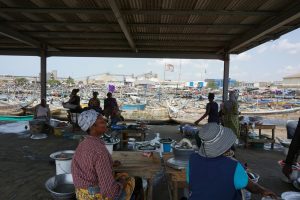Adaptive reuse: From malls to mixed-use communities
With the rise of online shopping and the decline of physical retail stores, malls have been struggling to stay relevant in today’s market. Vacant stores, declining foot traffic, and bankruptcies have left many malls abandoned and forgotten. However, there is a trend emerging that is transforming these once bustling shopping centers into vibrant and thriving communities. This trend is known as adaptive reuse, and it is changing the face of malls. In this article, we will dive into the world of adaptive reuse and explore how malls are being repurposed into mixed-use communities.
The Rise of Adaptive Reuse
Adaptive reuse is the process of repurposing an existing building or site for a new use. It has gained popularity in recent years as a sustainable and cost-effective solution for revitalizing old and abandoned buildings. Malls, in particular, have become a prime target for adaptive reuse due to their large size and central location in many communities.
While these malls may have been designed for a single purpose, such as retail, they have the potential to be transformed into multi-functional spaces that meet the diverse needs of today’s society. This transformation not only brings new life to these once-neglected structures but also provides economic, social, and environmental benefits to the community.
The Evolution of Malls to Mixed-Use Communities
The traditional mall concept, with its enclosed shopping space and department stores, has become outdated. Consumers are now seeking more than just a place to shop; they want an experience. This has led to the evolution of the mall into a mixed-use community that combines retail, residential, office, and entertainment spaces in one cohesive development. By diversifying the offerings, these mixed-use communities are creating a sense of place and becoming a destination rather than just a shopping center.
One of the main advantages of mixed-use communities is the ability to create a 24/7 environment. With the addition of residential units, people can live, work, and play all within the same development. This decreases the need for long commutes, reduces traffic congestion, and fosters a sense of community among residents.
The Role of Retail in Mixed-Use Communities
While the traditional mall may be declining, retail is still a vital component of mixed-use communities. However, it is no longer the sole focus. Retail spaces in these developments are becoming more experiential, with a focus on creating a sense of place and providing unique and immersive shopping experiences.
In addition to retail, mixed-use communities often include office spaces, catering to the growing number of freelancers and entrepreneurs. This creates opportunities for collaboration and networking, fostering innovation and economic growth in the community.
A Sustainable Solution
Adaptive reuse of malls also offers a sustainable solution to the growing issue of urban sprawl. By redeveloping existing structures, developers are reducing the need for new construction, preserving green space, and utilizing existing infrastructure. These developments also promote walkability, reducing the reliance on cars and decreasing the carbon footprint of the community.
The Challenges of Adaptive Reuse
While the benefits of adaptive reuse are numerous, there are also challenges that come with transforming a mall into a mixed-use community. One of the main challenges is financing. Upgrading and retrofitting an existing structure can be costly, and securing funding may be difficult. In addition, there may be challenges with zoning and building codes, as the original use of the building may not align with the intended use.
Another challenge is the need for proper planning and design to create a cohesive and functional mixed-use community. It is essential to consider the needs and expectations of the community, as well as the overall vision of the development, to ensure its success.
The Future of Adaptive Reuse
The adaptive reuse of malls into mixed-use communities is still in its early stages, but the trend is expected to continue to grow. It provides a sustainable solution to repurpose vacant and underutilized structures, creating thriving and dynamic communities. With proper planning and design, these developments have the potential to become the new hub of activity and a catalyst for economic growth in cities and towns across the country.
In conclusion, adaptive reuse is transforming the way we look at malls. No longer just a place to shop, malls are evolving into mixed-use communities that meet the diverse needs of today’s society. While there are challenges that come with this transformation, the benefits are numerous, making it a sustainable and viable solution for revitalizing these once-thriving spaces.










